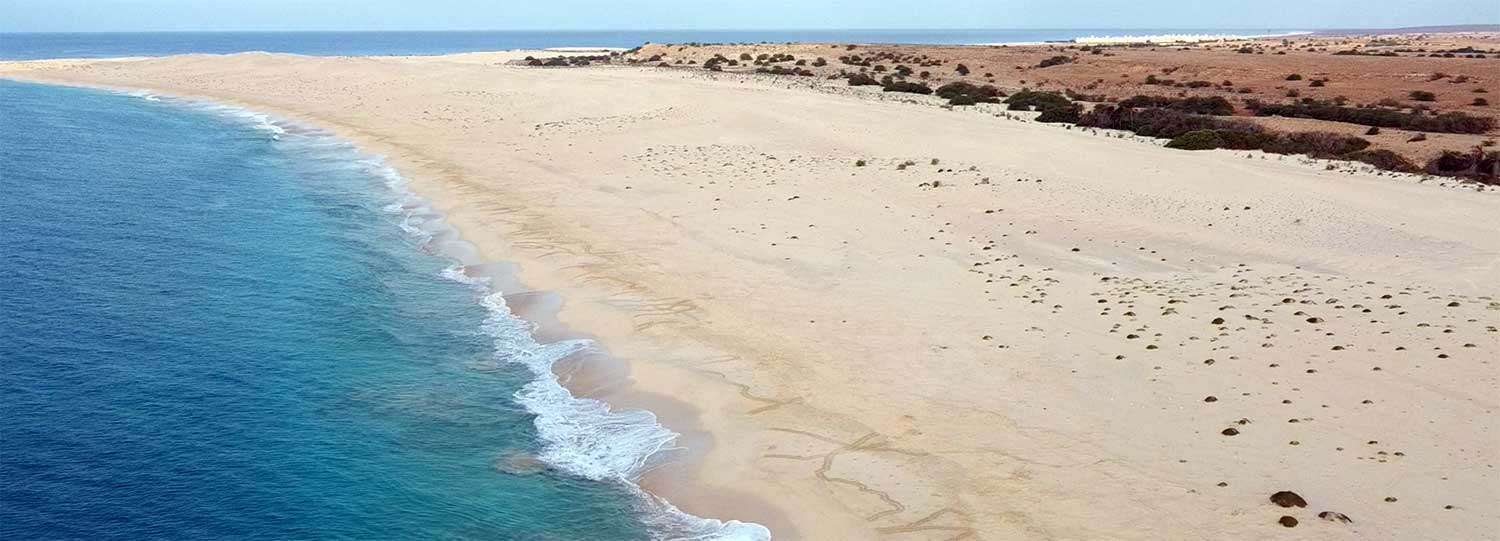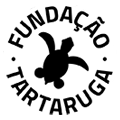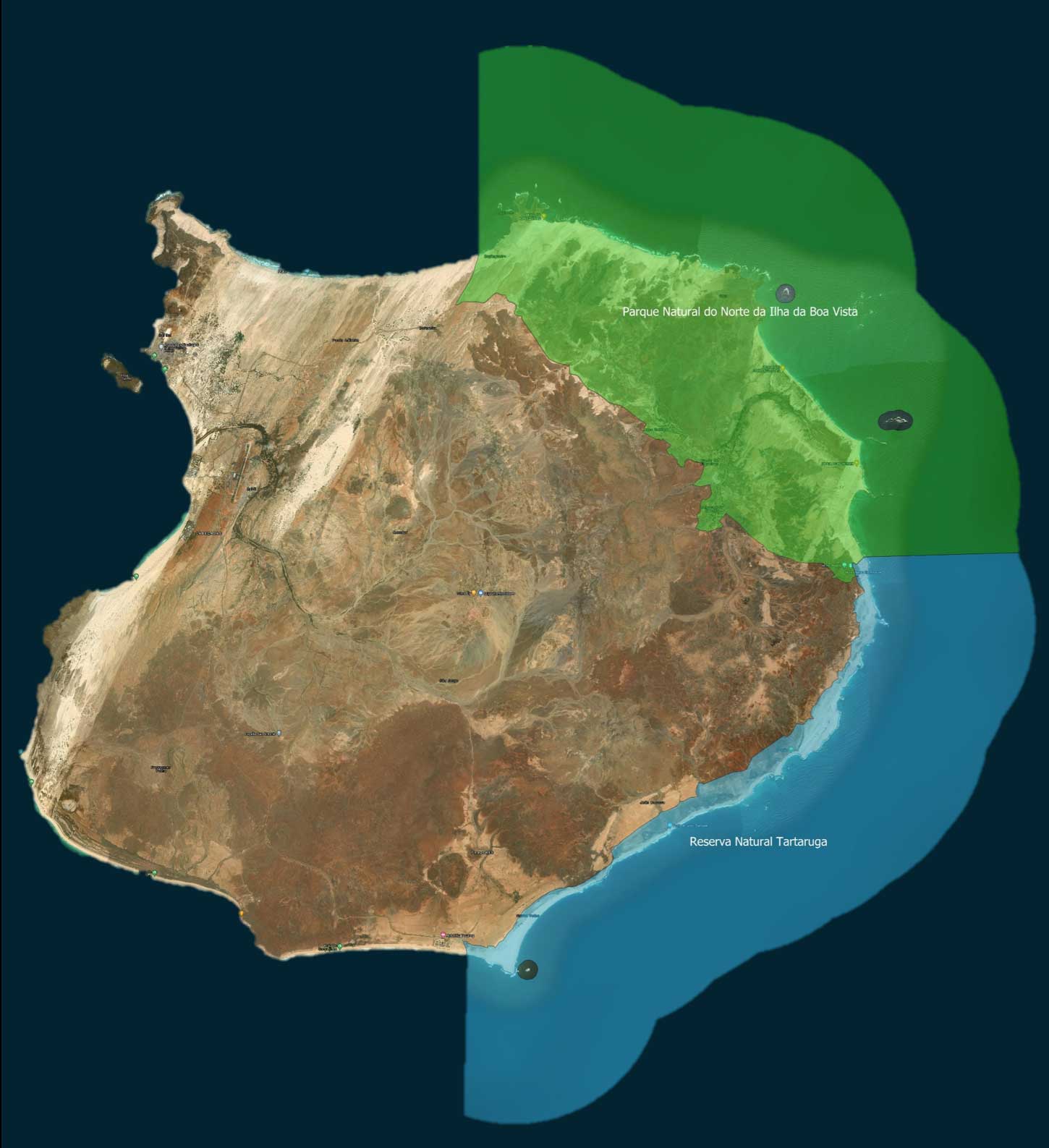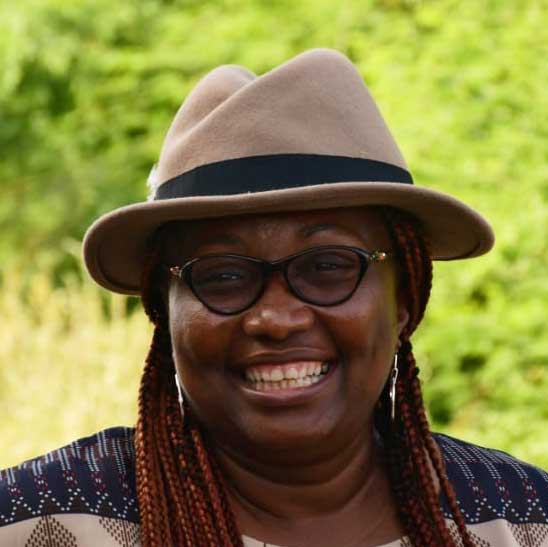
Community-based biodiversity assessment and continued protection of an endangered population of nesting sea turtles in two protected areas
Partners:


Medium Grant
Goal
Our overall goal is to make an important contribution to the conservation of biodiversity on Boa Vista/Cabo Verde through species recovery, knowledge and awareness increase and involvement of the local communities.
Timeline
June 2023 – December 2024
Result 1: Continue the protection of a globally important loggerhead turtle nesting site.
In 2023, we recorded only 16 poached turtles in these two protected areas. This represents a poaching rate of only 0.1% of the entire population of nesting turtles who visited this area this year (total of 70,481 divided by an average of 5 nests per individual). Our target indicator value was to have <50 poached turtles in the 2023 season, so we are delighted with this result.
In 2023, we recorded 368 turtles rescued and safely returned to the sea out of a total of 398 turtles recorded as found unable to return to the sea without intervention. This meant that 92% were rescued, which exceeded our target of 50%. Unfortunately, 30 were already dead by the time they were found.
36 rangers were directly employed by the MG-WA-2117 project, however a total of 183 national and international rangers and volunteers were involved in the protection effort.
35 PA rangers and coordinators attended a training workshop held by the Ministry of Environment and a further 25 individuals from tour operators attended a capacity building workshop to raise awareness about the importance of the turtles in Boa Vista and also the laws and legislations in place to protect them.
With the successful protection of this species, we are contributing to The Kunming-Montreal Global Biodiversity Framework GOAL A – Protect and Restore: Human induced extinction of known threatened species is halted, and, by 2050, the extinction rate and risk of all species are reduced tenfold, and the abundance of native wild species is increased to healthy and resilient levels;
We implemented extensive patrols around the island to reduce the risk of the endangered loggerhead turtles (Caretta caretta) being poached or threatened by other human means. We joined forces and collaborated with various stakeholders to raise awareness and implement activities with innovative technologies to reduce loss of turtles and to capture evidence to provide key data necessary to share information with key decision and policy makers and begin to take steps to design actions to reduce the threats further.
Recommendations:
- Continue to engage and collaborate with stakeholders to protect endangered species.
- Use the lessons learnt and success stories from this project to share knowledge with other islands, nations and NGOs to support them to apply techniques such as the application of innovative technology to preserve endangered species.
Result 2 : Collect baseline data on the species, habitats, ecosystems, resources and pressures present in the PA’s and increase knowledge and awareness of local people concerning the PA’s.
We now have baseline data from six different monitoring methods to allow us to evaluate the current and future status of several different aspects of the PAs. They focussed on the following themes: climate change, community engagement, sustainable resource use and extraction, impacts and pressures from human activities, status of invasive species and current distribution and abundance of endemic, endangered species. Now that we have this information, we can begin to design and implement effective management plans to improve the integrity, connectivity and resilience of the ecosystems and therefore contribute to The Kunming-Montreal Global Biodiversity Framework GOAL A – Protect and Restore.
Key findings:
- Participatory Monitoring of Corvus ruficollis
- Increased raven sightings during turtle nesting season (June-October), particularly in RNT and PNN.
- High predation rates on turtle hatchlings (194 cases recorded) but no evidence of predation on bird species.
- Ravens observed more frequently in areas with human presence, suggesting a correlation between human activities and raven abundance.
- Limited evidence of raven reproduction, with nests observed but no juveniles recorded.
- Osprey nests were more common in areas without ravens, while brown booby sightings decreased in raven-dense areas.
- Fisheries Biology of Goat Whelk (Persististrombus latus)
- Fishing activities concentrated in protected areas (PNN and RNT), with an annual catch of ~12,300 kg.
- Average individual size: 97.3 mm in length, 30.4 g in weight.
- Strong correlation between length and weight, but lip thickness and therefore maturity varied.
- Larger individuals found in Baía das Gatas compared to Ervatão.
- Monitoring of Invasive Plant Species and Impacts on Native Species
- Invasive species (Prosopis juliflora, Parkinsonia aculeata) covered up to 26% of surveyed quadrants, reducing native plant diversity.
- Tamarix senegalensis and Suaeda caboverdeana were less dominant, struggling to compete.
- Habitat degradation from invasive species threatens the survival of native flora.
- Census of Phoenix atlantica and Ficus sycomorus
- 488 individuals recorded (479 P. atlantica, 9 F. sycomorus), with most located outside anthropogenic zones.
- Only 13.9% of P. atlantica showed signs of regeneration.
- 75% of P. atlantica and 67% of F. sycomorus exhibited damage from human activities (burning, invasive species, collection, pests).
- Human-Induced Pressures on Protected Areas
- High feral animal presence in PNN (donkeys, goats, cows) impacting habitats.
- Significant reduction (98.5%) in sea turtle poaching over 16 years, though unreported cases persist.
- Resource extraction (sand, gravel, quarrying) mainly in PNN, affecting conservation efforts.
- Pollution (agricultural waste, construction debris, tourism waste) widespread, particularly in PNN.
- Unregulated human activities and poorly managed tourism add stress to the ecosystem.
- Climatic Data Monitoring
- Data collection from three active sites was inconsistent, with missing months.
- Highest recorded temperature: 43.2ºC (Povoação Velha); lowest: 18.6ºC (Lacação).
- Humidity ranged from 51% (Lacação) to 75% (Sal Rei).
- Community involvement included five trained individuals.
Recommendations:
- Continue the monitoring methods and/or repeat in the stipulated time frame to have an understanding of trends to assess the status of each of the values assessed.
- Widen the monitoring methods to other species, communities, threats and habitats to expand understanding of the entire PAs.
- Replicate the work undertaken in other PAs across the island and nationally to allow for comparison and national statuses.
- Use the information gathered to adapt current management plans to prioritise future actions.
Outcome 3: Improve the livelihoods of local community members through direct employment as rangers, improving the capacity of local fishermen to adopt sustainable practices
A total of 36 rangers were directly employed by this project during the sea turtle season, however this formed part of a much greater project in which a further 81 rangers, drivers, cooks and coordinators were employed in the sea turtle protection program plus 183 national and international volunteers contributed to the work.
18 different fishermen were engaged in the project related to the fishing of the goat whelk. The expected engagement in this activity was for 15 fishermen. This activity included data collection, questions and interviews, formal and informal data workshops including round table discussions, exchanges of knowledge and also the presentation of the results of the study. With the guidance of an international fisheries consultant, they were provided with key information related to the biology and ecology of the species, its current status in Cabo Verde and Boa Vista, and potential future projects, based on over-exploitation and climate change. This aspect of the project included data collection, questionnaires and interviews, formal and informal workshops including round table discussions, exchanges of knowledge and also the presentation of the results of the study. With the guidance of an international fisheries consultant, the fishermen were provided with key information related to the biology and ecology of the species, its current status in Cabo Verde and Boa Vista, and potential future projects, based on over-exploitation and climate change. In addition to the fishermen, this project also engaged the fisheries inspector, the delegate for the institute of ports and maritime affairs, the delegate for the ministry of environment in Boa Vista, Zofia Radwan – Focal point of turtle monitoring and Representative of the National Director of Environment, Fishing Inquirer, local city council of Boa Vista, the Society for Touristic Development in Boa Vista and Maio, several national NGOs, iMAR – Institute of the sea from multiple islands and fishmongers.
This has contributed towards The Kunming-Montreal Global Biodiversity Framework GOAL B – Prosper with Nature: Biodiversity is sustainably used and managed and nature’s contributions to people, including ecosystem functions and services, are valued, maintained and enhanced, with those currently in decline being restored, supporting the achievement of sustainable development for the benefit of present and future generations by 2050.
Recommendations
- Take the opportunity to continue to develop this new positive relationship with local fishermen to benefit both parties. They have extensive knowledge and understanding of the ecosystems and trends in resources. They could be a unique and valuable source of data and would benefit from further capacity building and support.
- Apply the knowledge learnt from the workshop and methods used to other islands in Cabo Verde to take a national approach to the situation.
Outcome 4: Increase in awareness and recognition of the PA’s nationally and internationally.
As part of this project, the PAs were discussed in many international and national events. The project manager presented the topic: Threats and pressures facing an endangered population of loggerhead turtles in Boa Vista, Cabo Verde. At the International Sea Turtle Symposium in Thailand to over 300 people and also at the PRCM Marine Forum in Guinea Bissau to over 200 people. The 20203 Turtle season results were presented in Mauritania at the PRCM steering committee meeting for the Survival of Sea Turtles program and at the TAOLA annual meeting in Santo Antao in2024.
25 social media posts were created and widely shared, with lots of engagement internationally across four different platforms Instagram, Facebook, Youtube and LinkedIn. Newsletters and annual reports included this project to share the information further.
We are delighted to say that the PAs which are the focus of this project were added to the WDPAs in August 2024. This is a huge achievement for Cabo Verde. FT have now led four IMET PAME evaluations in cooperation with other stakeholders.
Interviews were conducted and videos were shown in the local language to engage local people. Local people were encouraged to volunteer in the monitoring activities and “vulnerable” or “isolated” members of the community were selected to participate in data collection related to climate change. Our capacity raising activities engaged more than 312 people in this project.
Recommendations
- Continue to raise awareness internationally and put the four completed IMET evaluation on the WDPA.
- Engage more target groups from the population, building on the success of the engagement with the buzio fishermen.
- Present the work carried out in the PAs in more national and international conferences.
You can see a summary video of our project here:
Background:
Cabo Verde has 47 Protected Areas.
Boa Vista is home to 14 of these.
IMET
In October 2021, Fundacao Tartaruga organised a weeklong workshop to evaluate the management of the two largest protected areas on the island: Parque Natural do Norte and Reserva Natural da Tartaruga. An Integrated Management Effectiveness Tool (IMET) was used to complete an in-depth assessment on these two protected areas. Fundacao Tartaruga has four turtle conservation camps located in these two PAs and relentlessly works against mitigating the impacts of various threats and pressures facing turtles and their habitats.

Read the report on the IMET workshop:
Assessing the effectiveness of management of the Turtle Reserve and the Nothern Nature Park using IMET

Parque Natural do Norte
The Parque Natural do Norte is the protected area with the largest surface area on the island of Boavista, this protected area covers an approximate surface area of 22,047.00 ha (8,910.00 terrestrial and 13,137.00 marine). The basis for its declaration was to accompany the conservation of natural values (presence of turtle nesting areas, presence of avifauna of interest, mainly birds of prey and steppe birds, and geomorphological and landscape features) with the socioeconomic development of local populations, by enhancing traditional activities.
Reserva Natural de Tartaruga
The Reserva Natural de Tartaruga forms a large area (1,439 ha) that covers the coastline and an inland section parallel to it, along the entire eastern and southern flank of the island, from the base of Moro Negro to Cruzinha Brito Beach. It also encompasses an important marine area, with 13,436 ha, along its entire coastal area which corresponds to three nautical miles. The Turtle Nature Reserve was declared with the aim of conserving the beaches as turtle nesting areas, the wetlands and salt lands important for wading and migratory birds and the seabird colonies of Ponta do Roque and the cliffs of Morro Negro
This process gathered stakeholders from different organisations to look in depth at the Protected Areas and how we can improve them. This process was lead by Bertille Mayen from BIOPAMA.
Together with key members of the community we gathered information regarding the law and policies related to the protected areas, identified the resources they have available, identified the key species, habitats, ecosystem resources and pressures on each PA, analysed and evaluated their outputs and products and identified which areas need to be addressed in order to improve the management and sustainability of them. We also evaluated the needs and demands of the local communities living in and around the protected areas.

We identified that the PAs lack financial resources and personnel and also a lack of data regarding biodiversity and climate change monitoring.
One reoccurring message throughout the process was the stark lack of information readily available regarding the PAs. Only 7 of the 47 Protected Areas registered in Cabo Verdean law are registered on the World Database of Protected Areas (WDPAs). Without international recognition it is difficult to obtain the necessary resources including financial, technical and personnel in order to ensure the PAs are managed effectively.
See a summary of our analysis here:
Disclaimer
This website has been produced with the financial assistance of the European Union and the Organisation of African, Caribbean and Pacific States through the BIOPAMA Programme. The contents of this document are the sole responsibility of Fundacao Tartaruga and can under no circumstances be regarded as reflecting the position of the European Union nor of the Organisation of African, Caribbean and Pacific States.
About BIOPAMA The Biodiversity and Protected Areas Management (BIOPAMA) programme aims to improve the long-term conservation and sustainable use of natural resources in African, Caribbean and Pacific (ACP) countries, in protected areas and surrounding communities. It is an initiative of the Organisation of African, Caribbean and Pacific States financed by the European Union’s 11th European Development Fund (EDF), jointly implemented by the International Union for Conservation of Nature (IUCN) and the Joint Research Centre of the European Commission (JRC). Building on the first five years of activities financed by the 10th EDF (2012-2017), BIOPAMA’s second phase provides tools for data and information management, services for improving the knowledge and capacity for protected area planning and decision making, and funding opportunities for specific site-based actions. www.biopama.org
























































